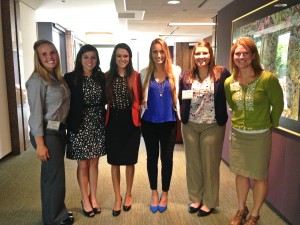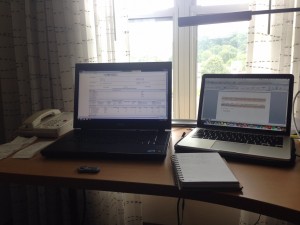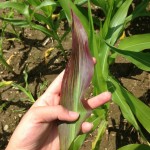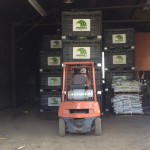Just as our internship this summer began with a training week in St. Louis, MO at the company headquarters, we finish with a final wrap-up week back at the same location. While the first week was all about preparing us for our role and helping us to understand what to expect, the final week is all about recapping our experiences and gauging what we learned throughout our time with the company.
After catching up with friends and sharing our own adventures, we worked on adding finishing touches to our presentations, practicing our deliveries, and brushing up on our interview questions. The day after our arrival, we all broke out into different groups to present our corporate projects with our student teams and mentors. Each student was evaluated by the designated mentors with a form, which would eventually be used to critique our possible return for another internship or trainee position after the conclusion of the week. In my case, I gave two presentations: One was the wrap-up of my summer experience with brief comments about my corporate project, and one solely dedicated to the Vistive Gold project to the special analytics team (the rest of the students combined their comments about their summers and projects into one presentation). We were asked to give two because this was the first time data regarding grain-handling facilities was recorded and they wanted to get an idea for it right away.
After a break from presenting, everyone had the opportunity to sign up for an interview slot. For rising seniors, they could interview to be DSMTs (District Sales Manager Trainees), and for rising juniors, they could interview to be retuning interns. I decided to interview for the returning role, which I can gladly say I was offered another position that I accepted for the summer of 2016.
Later in the day, all of the interns had the chance to sit down and eat lunch with their St. Louis connection, or an employee at the headquarters who somewhat acted as a “link” or a “sponsor” just to be there to answer questions and provide guidance over the course of the internship. I was already well acquainted with mine prior to the beginning of the internship, as I had the opportunity to travel to St. Louis in December of 2014 to meet with different individuals in roles across the company as hosted by an upper-level member of Monsanto, which I am very grateful for as it gave me the chance to get to know many people before arriving. My St. Louis mentor and I talked about where I could take my experience with Monsanto in the future, and it really helped capture my interest in post-graduate careers.
As the few days wrapped up, we turned in our equipment and vehicles and prepared our trips back home, all leaving with a great experience, good friends, and a new perspective in working in the agricultural business world. I am nothing short of impressed with the company and the learning opportunity they provided us. See you next summer, Monsanto!

















